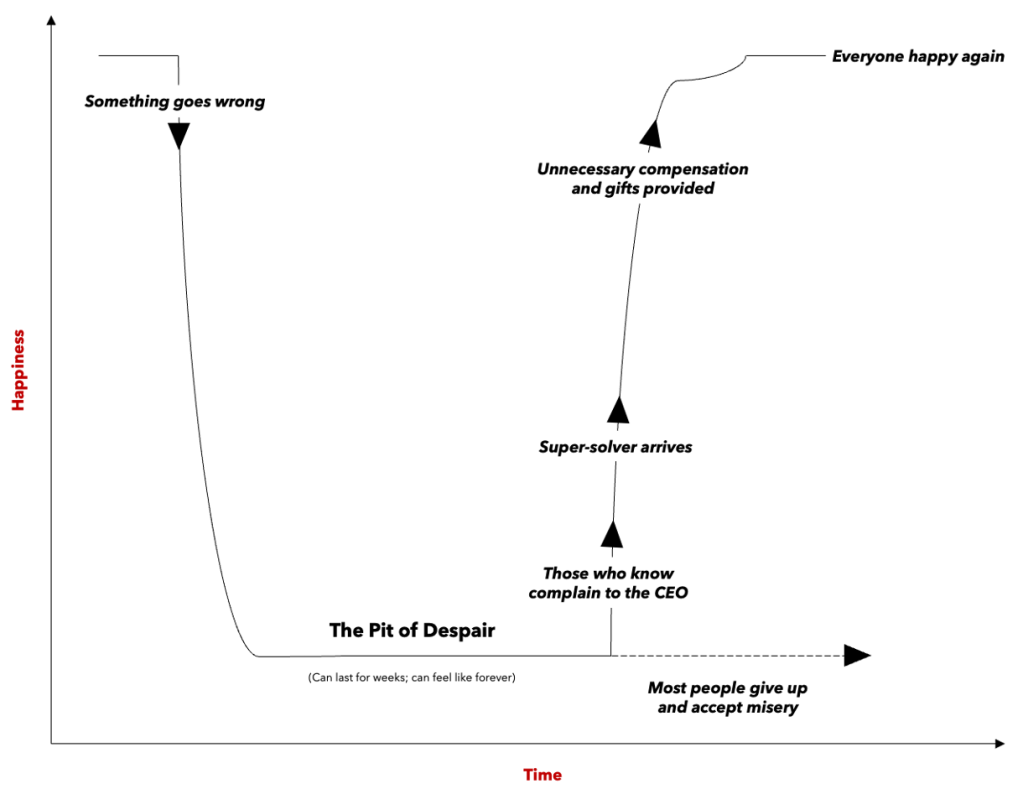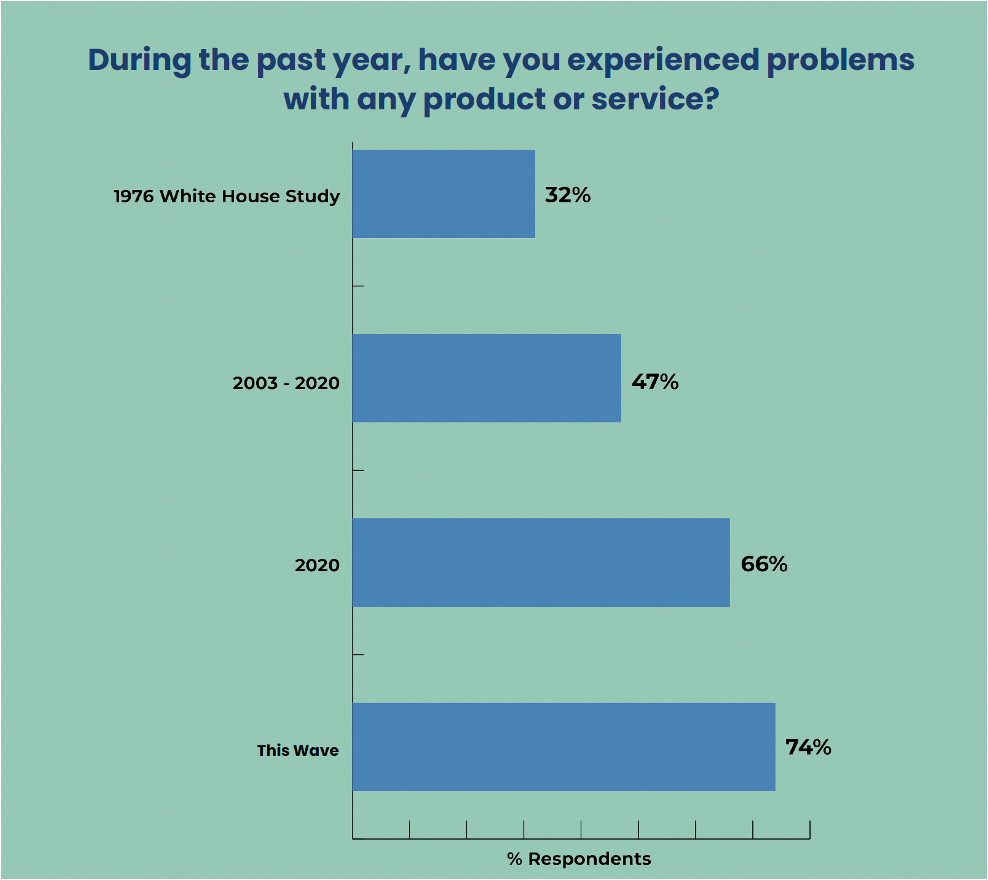You’re reading CX Stories, a newsletter about customer experience innovation. If you want to join the 4000+ lovely people who receive it every month, just enter your email address below.
About ten years ago, I got invited to a posh dinner about the future of payments with a colleague. The food was good, the conversation interesting and then, at the end of the night, we were inexplicably given a free pen.
I didn’t think much more about it, because, y’know, who cares about pens, especially when your handwriting is as bad as mine. But then, my colleague messaged me in excitable panic.
I’ve just been online to buy some refills. Guess how much the pen costs?
£25?
Try £300
It’s fair to say, I’ve never cared about a pen more in my life.
Fast forward to 2024, and I’ve managed to break the pen, snapping off the clip. (This actually happened about three years ago, but as the primary writing function of the pen seemed to be doing ok, I just lived with it.) However, after accidentally launching the pen across the room at a client as it flew out of my notebook, I thought I should get it fixed.
This is how I found myself in the Mont Blanc store in Bond Street, having one of the best customer experiences I’ve had this year.
First, they welcomed me to the store. Then, they apologised profusely for the breakage. They offered to fix it there and then, but as it was old and I had no receipt, I’d have to pay for the fix.
(At this point, with the fix costing £70, I realised I was essentially going to pay £70 for a pen, but persuaded myself this was probably worth it given a) the value, b) the fact that it had lasted for over ten years without any other signs of wear and tear and, c) more importantly, that I was too socially embarrassed to say no)
They took the pen on a pillow (something I found utterly hilarious), gave me a seat downstairs, and offered me a drink whilst I waited.
Now, whilst that was all good, that’s probably expected from a high-end shop in the West End of London.
What happened next wasn’t.
The pen arrived back (still on its special travel pillow), and I want to the till to pay. Except, the till wasn’t having it. The very helpful lady tried several times, all whilst making impressive small talk, but something wasn’t working. So after five minutes, she stopped, and said:
‘This is a waste of your time. There’s no need to pay, you can have the repair for free’
I cannot tell you how happy I was to still not have paid a penny for this pen.
We have a problem, with problems. We have more of them, and we’re worse at dealing with them, as the brilliantly-titled ‘National Rage Survey’ shows:
It feels to me that when we (I) talk about customer experience getting worse over the past few years, that’s not quite what we mean. As I wrote last time, lots of the experience has got undeniably better, faster, easier to do.
But where it has got worse is in how organisations deal with things going wrong. I think this is because:
- More of our experiences are now ‘digital’ in some way
- Organisations believe their ‘digital’ and ‘technology’ to be infallible, unable to go wrong (Post Office, I’m looking at you)
- When something out of the norm happens, it’s become much harder to speak to someone, trapped in a loop of Chatbots, FAQs and ‘Did you know you can do this on our website?’
- When you do eventually speak to someone, they either claim it must be user error (Post Office), or have no idea how to fix the problem, disconnected from the way their product or service ‘works’
This leads to customers falling into the ‘Pit of Despair’, stuck in a loop with no-one to speak to, no one taking ownership, no place to go to see someone in person. So the only alternatives left are to try and contact the CEO, or curl up in a ball on the fall and scream yourself to sleep.

Even now, when you ask people to talk about a good experience they’ve had, most talk about when something went wrong, when someone was there to help them.
That’s because customers know that things will go wrong, that life isn’t perfect. They’re not looking for a company or experience that promises to get something right all of the time. Instead, they want the certainty that if something does go wrong, the company will take ownership, and be there to fix it, fast.
Get that right, and you’ll have customers signing on for life.
Thanks for reading this article, I really hope you enjoyed it. You can subscribe to my monthly newsletter below, and find me in tweet form @johnjsills, in picture form on Instagram @johnjsills, or in work mode at The Foundation or on LinkedIn.
